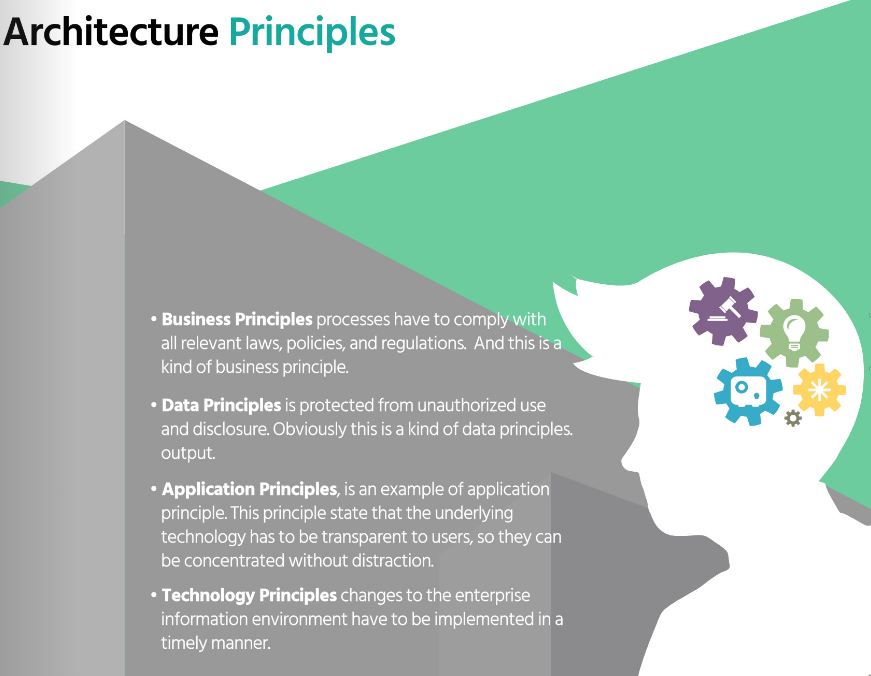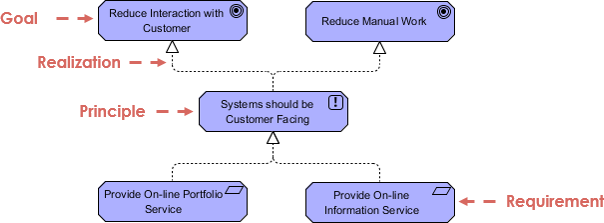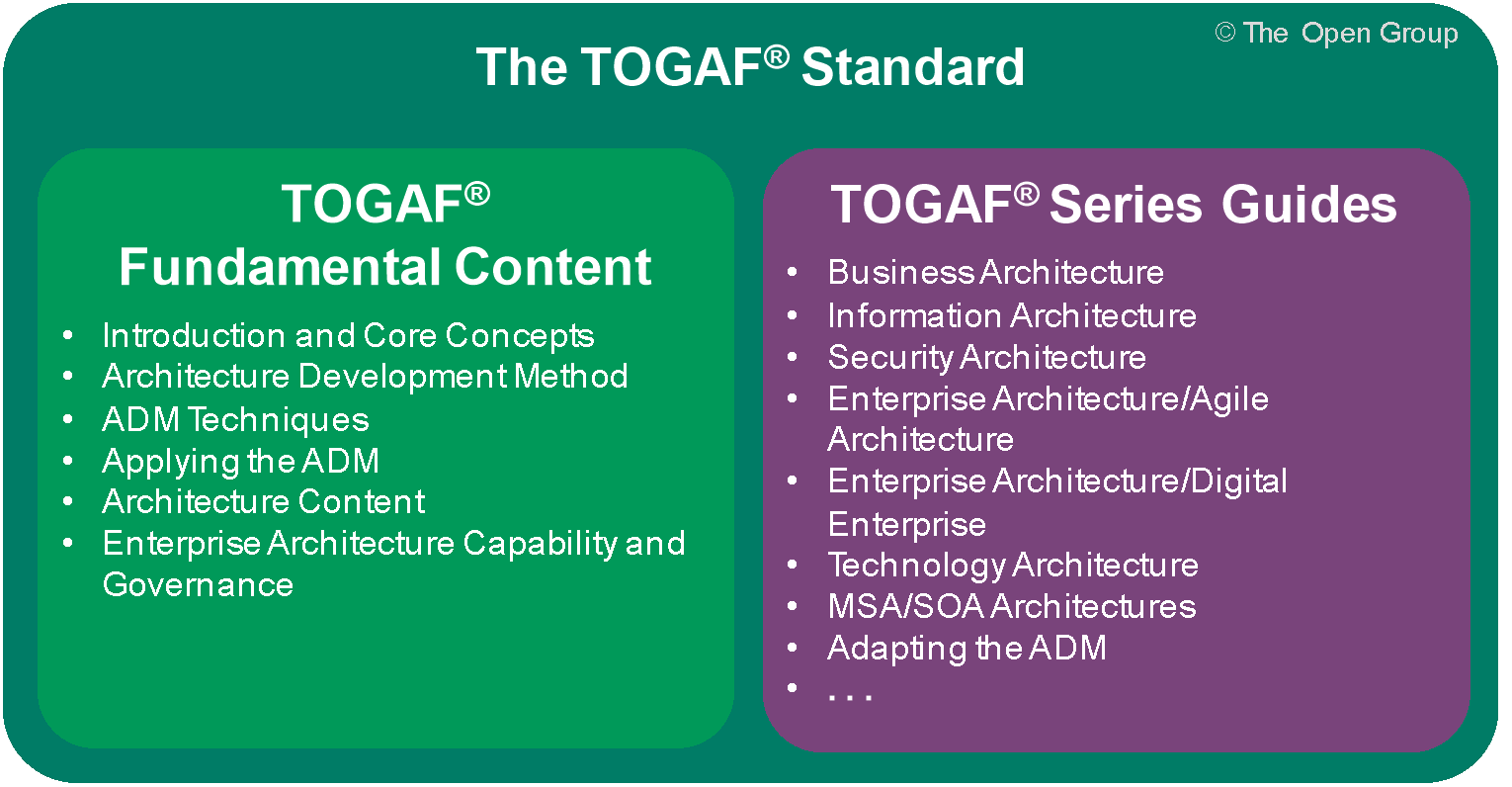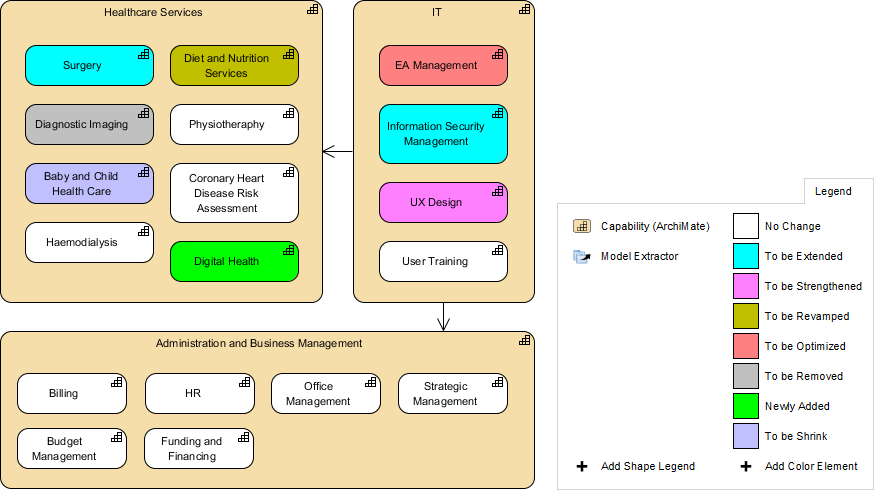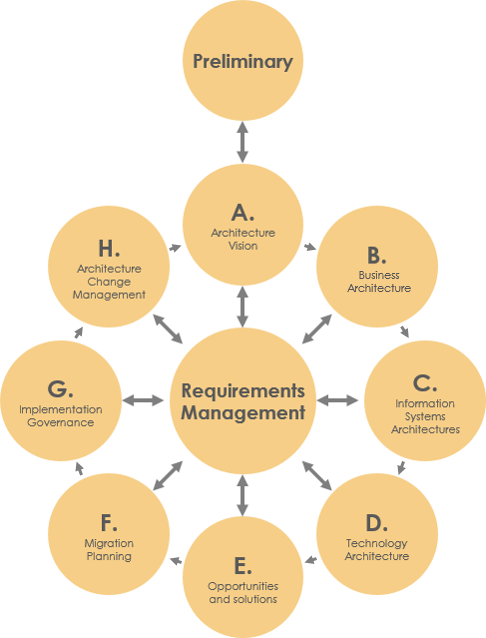Home » Enterprise Architecture » Page 6
Enterprise architecture (EA) is a critical discipline that enables organizations to design and implement effective IT strategies that align with their business goals and objectives. A key component of any EA project is the development of architecture principles, which provide guidance on the design and implementation of the enterprise architecture. Architecture principles define the fundamental values and guidelines that should be followed when making decisions about the architecture, including decisions about business processes, data management, application design, and technology selection. In this article, we will explore some best practices for writing effective architecture…
continue reading →
TOGAF ADM Techniques - Architecture Principles The Open Group Architecture Framework (TOGAF) is a widely adopted framework for enterprise architecture (EA) that provides a common language, methodology, and tools for designing, planning, and implementing an organization's IT infrastructure. One of the key components of TOGAF is the Architecture Development Method (ADM), which provides a step-by-step process for creating and managing an enterprise architecture. Within the ADM, there are various techniques that can be used to support the development of an organization's architecture. In this article, we will focus on one of these techniques:…
continue reading →
The Architecture Development Method (ADM) is a key component of the TOGAF framework, which provides a comprehensive approach to enterprise architecture development. The ADM provides a structured approach for developing and managing enterprise architectures that align with business objectives and meet stakeholder needs. To maximize the benefits of the ADM process, it is important to understand how it can be adapted to meet the specific needs of an organization. The TOGAF ADM Guidelines provide practical guidance for adapting the ADM process to deal with a range of different usage scenarios, such as incorporating…
continue reading →
In the world of enterprise architecture, TOGAF® is a well-known and widely used framework that provides a comprehensive approach to designing, planning and implementing enterprise information technology architecture. Developed in 1995 by The Open Group, TOGAF® has become a globally recognized standard for enterprise architecture and is used by organizations of all sizes and types, including government agencies, financial institutions, and multinational corporations. This article will provide an overview of the TOGAF® framework, its benefits, and how it can be used in practice. Introduction to Enterprise Architecture Enterprise architecture is the process of aligning an…
continue reading →
TOGAF 10: What is New? The latest version of The Open Group Architecture Framework, known as TOGAF Standard, 10th Edition, offers several enhancements to facilitate the adoption of best practices for enterprise architecture. This edition provides guidance on where to find enduring, universal concepts and proven best practices, as well as on emerging ideas that can help organizations stay at the forefront of their industries. The TOGAF Standard is widely used by businesses of all sizes, government agencies, and non-governmental organizations. The 10th Edition includes greatly expanded guidance and how-to material that can…
continue reading →
What is Capability Map in ArchiMate? A Capability Map in ArchiMate is a graphical representation of the capabilities of an organization or enterprise. It shows the main business capabilities and how they relate to each other. The purpose of a Capability Map is to help organizations understand their own strengths and weaknesses, and to identify areas where they need to improve in order to achieve their goals. A Capability Map is useful when an organization wants to plan its business strategy or when it needs to change its operations. By mapping out its…
continue reading →
ArchiMate and
BPMN are both popular modeling standards for business modeling. ArchiMate is an
architecture modeling language that provides a visual representation of the structure and organization of an enterprise. On the other hand, BPMN is a business process modeling notation that provides a visual representation of
business processes and their flow.
While both ArchiMate and BPMN are useful for modeling businesses, they have distinct differences that make each one better suited for certain use cases. It is important to understand these differences in order to choose the best approach for your needs. In this article, we will compare ArchiMate and BPMN and help you understand the key differences between the two, helping you to make informed decisions about which approach is best for your specific use case.
(more…)
TOGAF, or The Open Group Architecture Framework, is a widely used enterprise architecture framework that provides a comprehensive approach to designing, planning, implementing, and governing enterprise information systems. It provides a common language and methodology for enterprise architects to design and manage the architecture of an organization.
(more…)
As an enterprise architect, you are likely familiar with ArchiMate and TOGAF, two of the most widely used modeling languages for enterprise architecture. While both ArchiMate and TOGAF have many similarities, they also have important differences. In this article, we'll explore these differences to help you choose the right modeling language for your needs.
(more…)
ArchiMate is a modeling language and framework used by enterprise architects to describe, analyze, and visualize the relationships between various aspects of an organization, including its business processes, data, applications, and infrastructure. In this article, we will explore the purpose of ArchiMate and how it can be used by enterprise architects to support their work.
(more…)

